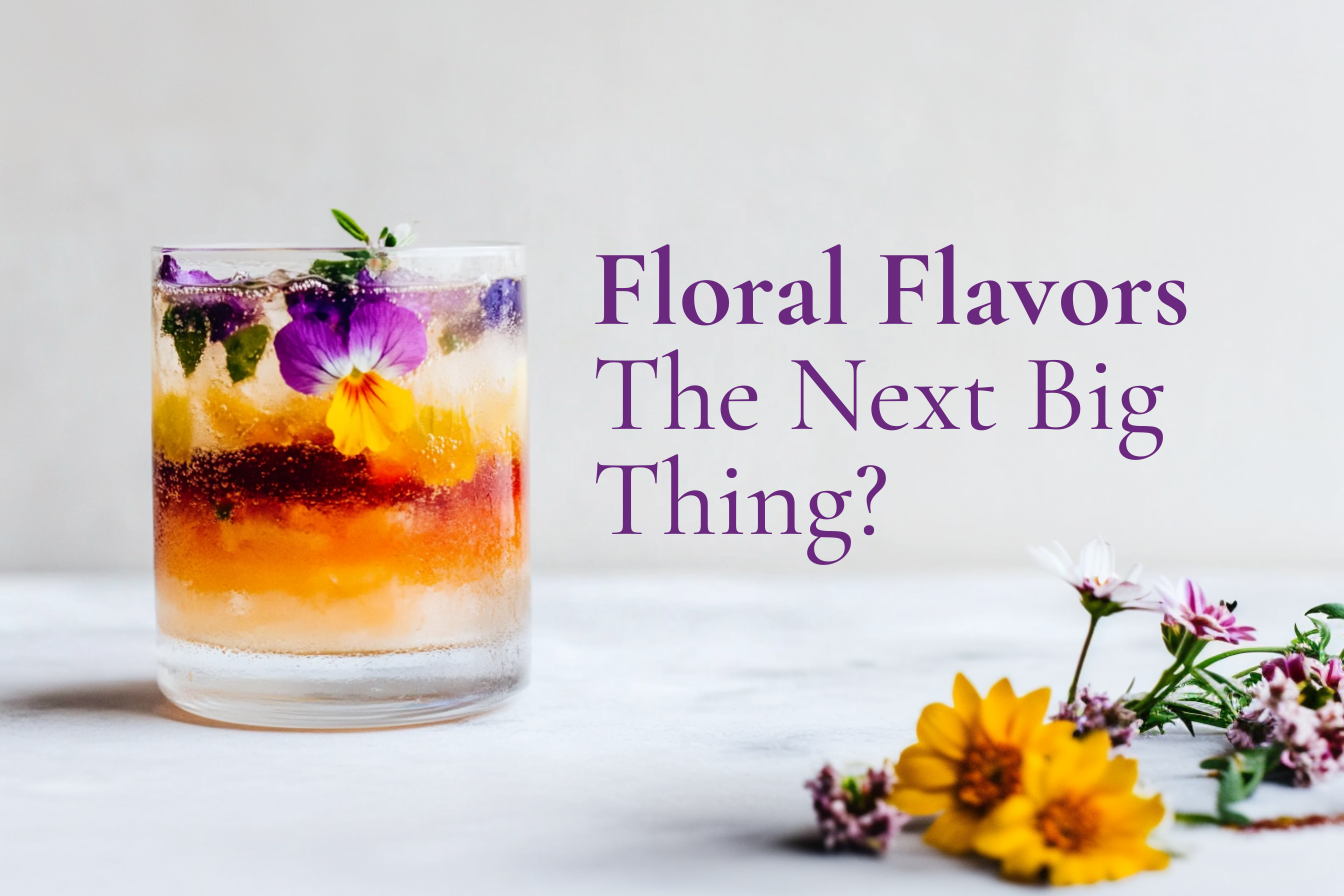
Floral flavors are increasingly capturing the attention of the food and beverage industry, especially in the United States. This emerging trend is driven by consumer interest in unique, sophisticated taste experiences and a growing focus on health and wellness.
From the exotic taste of hibiscus in beverages to the delicate sweetness of elderflower in cocktails, floral flavors are becoming a must-have in product innovation.
In this blog, we’ll explore the rise of floral flavors, their appeal across various food and beverage categories, and the driving forces behind their growing popularity.
Floral flavors have made their way into various products, from sweets and chocolates to craft beverages and teas. Here are some of the key floral flavors that are trending:
Rose flavor has long been a staple in desserts and sweets, particularly in Middle Eastern cuisine. However, it has recently gained popularity in the U.S., especially in chocolate products. 47% of chocolate consumers express interest in rose-flavored chocolates. Its subtle and aromatic notes add a layer of sophistication to confections and beverages alike.
Lavender, known for its calming properties, is finding its way into more than just aromatherapy products. This floral flavor appears in everything from craft cocktails to chocolates, with nearly 50% of consumers expressing an interest in lavender-infused sweets. Its floral yet slightly herbal taste makes it a versatile addition to beverages and desserts.
Hibiscus is one of the most popular floral flavors in beverages today. Known for its vibrant red color and tart taste, hibiscus is commonly used in teas, cocktails, and even functional beverages like kombucha. Its high antioxidant content further enhances its appeal, especially among health-conscious consumers.
Often associated with calming teas, chamomile is now being used in soft drinks and wellness beverages. Its subtle, slightly sweet flavor complements a variety of drinks, from sparkling waters to kombuchas. With its calming properties, chamomile is fast becoming a favorite among consumers seeking relaxation.
Elderflower’s delicate sweetness makes it a favorite in cocktails, mocktails, and sodas. It is also increasingly used in sparkling waters and flavored kombuchas, offering a light, fragrant taste that appeals to those looking for premium, natural flavors.
Why are floral flavors gaining traction in the food and beverage industry? Well, several key trends are driving their popularity.
Consumers are increasingly linking floral flavors with health benefits, particularly as they are often perceived as natural and botanical. According to recent studies, 57% of consumers report that botanical ingredients influence their food and beverage choices. Hibiscus and elderflower, for example, are both high in antioxidants, which makes them attractive options for those looking to boost their immune systems.
Floral flavors are flourishing in the craft beverage space. From lavender-infused cocktails to chamomile-flavored kombucha, these flavors signify premium quality and often command higher prices. Sparkling waters infused with jasmine or hibiscus are also gaining popularity, as they offer a refreshing alternative to traditional soda or fruit-flavored beverages.
Floral flavors offer a revisited version of old recipes. Think of classic rosewater desserts or chamomile teas that evoke a sense of comfort and relaxation. At the same time, brands are giving these familiar flavors a modern twist, appealing to consumers who crave a combination of the old and new.
According to recent studies, floral flavors are a leading trend in 2024, with 33% of consumers actively seeking more floral options in their food and beverages. The global market for floral flavors is expected to grow at a compound annual growth rate (CAGR) of 5.1% until 2025, driven by consumer demand for innovative and natural flavors.
This growth is particularly evident in the beverage industry, where product launches featuring floral flavors have grown by 5.6% over the past five years. Popular categories include:
Floral flavors are often associated with premium products, especially in categories like beverages and confectionery. The use of botanical extracts on a product’s label can elevate its status, allowing brands to charge higher prices. For instance, in China, 41% of adults associate exotic flavors, including floral notes, with premium beer.
Floral flavors are expected to continue their rise in popularity across multiple categories, driven by consumer interest in health, wellness, and unique taste experiences. Here are a few trends to watch:
Floral flavors are making a significant impact in the food and beverage sector, appealing to consumers seeking distinctive, health-oriented, and upscale taste experiences. From lavender cocktails to rose-flavored chocolates, these subtle, fragrant notes are becoming increasingly popular. The trend shows no signs of slowing down, with floral flavors expected to expand their presence in the market in the coming years.
For more information on our flavoring solutions contact us at americas@aromatechus.com.